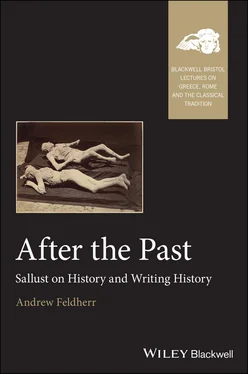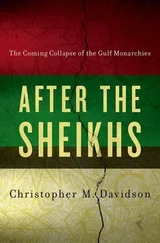Another of Kumaniecki’s observations about the formal properties of Cicero’s treatise suggests further complexities in the relationship between the historical Cato and his representation in words. For he demonstrates that Cicero did not structure his Cato as a traditional Roman funerary oration, following the public career of his subject, but organized it systematically according to the virtuous qualities demonstrated by his life. Such a choice not only pushed against generic boundaries by bringing the work closer to Cicero’s philosophical productions. 10If Cato’s struggle became to escape from history, not to see the present come in to being ( facta ), that may well have given special significance to Cicero’s shift from a traditional Roman means of maintaining the political presence of the deceased as political capital for his gens to a more international style of praise focusing on subordinating actions to the virtues they exemplify. Caesar’s response, which began by opposing his own persona as a man of action with Cicero’s as a man of words, although also arranged by topics, may have been to bring Cicero’s Cato back down to earth by offering sordid details from his personal life to demonstrate vices that countered the virtues Cicero had praised. The distinctive importance of such a tension between representation and reality for portraying Cato emerges from a statement Cicero made in his own treatise: “[Cato’s] case reversed what usually happens to most men, for everything about him seems to have been greater in reality than in reputation; not often is expectation surpassed by knowledge and the ears by the eyes.” 11
This fragment of Cicero would be echoed in Sallust’s concluding words about Cato: “he preferred to be rather than to seem a good man, and therefore the less he sought glory the more it came to him” ( Cat . 54.6). But Cicero’s comment also has an important programmatic aspect, in a sense pitting the real Cato against Cicero’s literary accomplishment: What verbal portrait can match the reality? Such a formulation allows us to perceive the relevance of the flurry of epideictic writing surrounding Cato for Sallust’s work in terms not only of its shared content but also of its own ambiguous literary affiliation. Quintilian reports that the form Sallust chose for the work’s opening, its inclusion of a prologue that has no obvious connection to its subject, was itself an imitation of epideictic practice (Quint. Inst . 3.8.8–9). While some have doubted the specificity of this formal gesture, 12the contents of the Catiline ’s beginning might well have reinforced its evocation of epideictic. For the theme of virtus , which we will later discuss as a philosophical topic, also points to the aspect of historiographical writing that brought it nearest to epideictic oratory, praising and blaming the characters of its protagonists. Indeed, the emphasis on virtus in the Catiline prologue may have particularly evoked the Catonian innovations in panegyric suggested above. While all subjects of laudations would inevitably be praised for their virtues, Cato’s exalted moral reputation, in addition to his stoic leanings, make him a likely embodiment of virtue itself. So Cicero elsewhere attributes his reluctance to tackle a Cato on his fear of “times unfriendly to virtue” ( tempora timens inimica virtuti , Orat . 35). Strikingly, when Sallust in his own preface turns to praise the specific literary task he has taken on, writing history, both of the reasons why it is praiseworthy recall Cicero’s comments about the Cato ( Cat . 3.2). The difficulty of “matching words to deeds” would be amplified by recalling the unique position of Cato, whose deeds were so much greater than their reputation, and the possibility of a hostile audience’s reaction to excessive praise was what Cicero too had feared.
Cato, then, as this tradition perhaps constructed him, polices the border between history and epideictic from both sides. His virtues seem to transcend what was possible, to require the language of fama , and yet they remain in the realm of fact; the eyes, recalling the autopsy on which the authority of historiography especially depended, win out over hearsay. And perhaps for that reason he seems to wander suddenly into Sallust’s account. Unlike his opponent Caesar, there has been no mention of him in the work before he begins to speak, and that speech itself shows him less as the ideal subject of a work of praise than as the practitioner of vituperation: “Often have I complained about the luxury and avarice of our citizens, and therefore I have made many men my enemies” ( saepe de luxuria atque avaritia nostrorum civium questus sum, multosque mortalis ea causa advorsos habeo , Cat . 52.7). This language not only makes Cato amplify the moralizing elements of Sallust’s own history, 13it similarly puts him in the position feared by the very author of his praise, Cicero. On this single, “historic” occasion, however, he is not talking about virtue and vice but the condition of the republic. And, as praising him, according to Cicero, demanded emphasizing his later foresight of what Caesar’s victory portended, so in the Catiline his theme is not “whether to live with good or bad morals” but whether “the state, together with us, will become the possession of our enemy.” Again looking back at Cato looking forward must have brought many who knew their Catos to lose the distinction between the distant history of the conspiracy and more recent events, an effect prepared by the disorienting temporal perspectives of Caesar’s speech, where he imagines the audience’s actions in 63 BCE being judged from the perspective of the future. And a different intertext from this tradition would have abetted this impression. We know that Brutus’ Cato had included an account of his role in the punishment of the Catilinarians ( Att . 12.21.1) and that, in making Cato’s rather than Cicero’s the decisive voice on that occasion, it must have had more in common with Sallust’s version than Cicero’s. 14For someone reading Sallust’s Catiline in, say, 41 BCE, the confusion might not have been simply between Cato’s stand against Catiline in the 60s and his stand against Caesar in the 40s, for their attention to the historical reality reported by Sallust would also have received interference from the experience of reading a tract in praise of Cato from after his death.
Other than this erosion of historical specificity, the blurring of the narrated “then” and events approaching “now,” and of reality and its textual representation, what might have been the significance of such superimpositions of epideictic on Sallust’ history? For one thing, it would have redoubled many times over the sense of historical rupture conjured by looking back at the Sullan period. Not only did the Caesarian civil war, thanks in part to the death or exile of so many major political figures like Cato, bring about a similar break, but if the act of commemorating Cato in 45 BCE had emphasized these losses, even that period of epideictic Cato s would seem irretrievably distant when Sallust’s Catiline appeared, although only a few short years had passed. Anyone remembering Cicero’s or Brutus’ Cato , or Caesar’s or Hirtius’ Anticato , would likely have been struck by the reflection that not only was their subject dead but so were the authors themselves. This pattern of loss, not only seemingly infinitely repeating in time but moving outward from texts to their authors and readers, figures also a pattern of political fragmentation recalling the dissonant perspectives in the Catiline ’s final scene. Cato in Sallust is already a divisive figure, someone whose ethical standards had made him enemies, and this divisiveness comes to involve the authors of the various written Catos . An audience’s view of Cato was colored not only by a sense of their own inadequacies, but by their own interests. Despite Cicero’s friendship with Brutus, he took offense at how his own role in events was diminished in his Cato . Indeed, the posthumous debates over Caesar and Cicero as well as Cato suggest that the perspective of and on the individual, arguably what killed the republic, will be what survives of it. And if the account of Cato’s death in any of those treatises approximated the graphic particularity of Seneca or Plutarch’s later versions (Sen. Prov . 10–12; Plut. Cat. Min . 70–1), the act of reading it must have itself further stoked partisan feelings. There is thus a connection between a narrative that focuses on the individual rather than the state and a tendency to interpret that narrative from the perspective of individual rather than collective interests. But while the literature of praise and blame could thus bear witness to the separation of present from past and advance the partisanship that brought that separation about, it also contained a key to transcending that sense of temporal and civic distance: the behaviors chosen out for praise become repeatable and so no longer limited to a specific historical instance and point to qualities that are independent of time and circumstance. 15
Читать дальше












